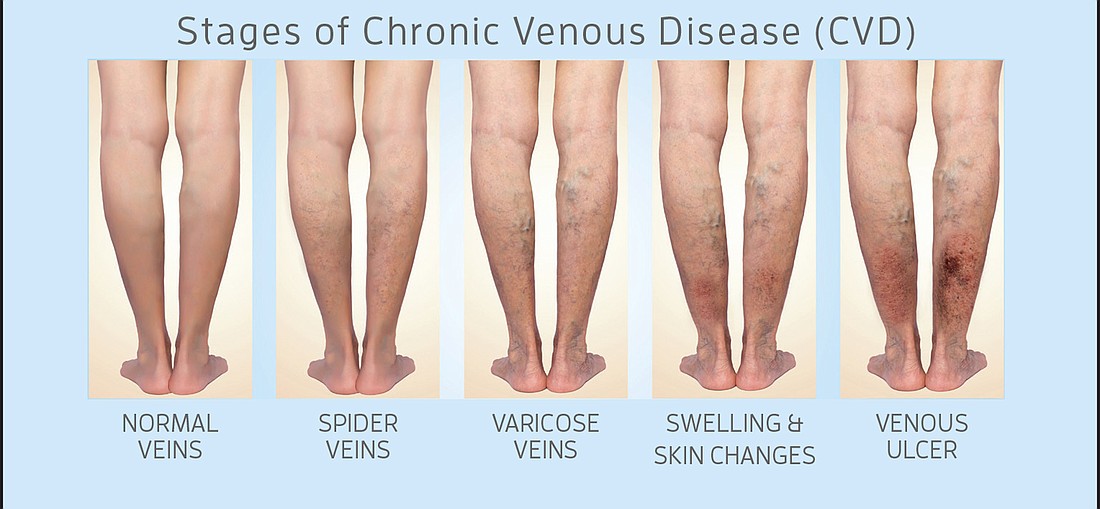-
-
Loading

Loading

More than 40 million Americans suffer from undiagnosed vein disease, and only 1% of those diagnosed seek treatment. If left untreated, vein disease (those pesky varicose veins) will progress at 4% a year with worsening symptoms. There are six CEAP classes, or stages, of vein disease. Do your legs fall into one of these stages?
STAGE 1: Small red or blue veins begin to emerge under the skin’s surface resulting in the appearance of tree branches. These are tiny, dilated veins (AKA spider veins) which typically measure one millimeter or less in diameter. Spider veins are just the “tip of the iceberg” and signify leaky valves in the leg’s veins.
STAGE 2: Untreated spider veins can lead into varicose veins, which are the larger, blue twisted veins that bulge under the surface of the skin. Most patients become concerned at this stage when the dark blue or purple veins begin to cause heaviness, itching, pain, inflammation, or vein rupture. Varicose veins are delicate, and if they’re particularly close to the surface, profuse bleeding can occur if scratched or nicked while shaving.
STAGE 3: When varicose veins are left untreated, legs and ankles begin to swell from the blood pooling in the lower leg. Swelling will result in tightfeeling skin, heaviness, restless legs, and a leathery look to the skin. Swelling is caused by the leaky valves which have now faltered to the point of not being able to circulate blood back up to your heart.
STAGE 4: Have you ever seen someone with rust-colored calves or ankles? Skin discoloration is the key sign of stage four vein disease. The discoloration is hemosiderin (iron) depositing in the skin from the breakdown of blood which is pooling in the lower legs.
STAGE 5: In this stage, wounds (leg ulcers) occur in addition to all the changes from stages one through four. Wounds can be scarred over and difficult to heal.
STAGE 6: Lastly, a lack of blood flow and skin nutrition result in active ulcerations (open wounds) which weep and bleed. Venous stasis ulcers account for 90% of all lower-extremity ulcers and are often chronic due to poor treatment. Leg ulcers can leak a yellow fluid or pus, which is green and smells foul. They often burn and are tender. Active ulcers are also a risk factor for development of cellulitis, an infection of the skin and soft tissue of the legs.
At Florida Lakes Vein Center, we’re experts at healing vein disease in any stage of development. Our state-ofthe-art treatments eliminate symptoms so you can get back to the living the lifestyle you want. Visit our website to learn more about our treatments, take our three-minute vein screening, and request an appointment! It’s a no veiner!
Call for a FREE vein screening. 941.866.8989. Florida Lakes Vein Center offers appointments in Lakewood Ranch on Tuesdays & Thursdays 8am-5pm. 9114 Town Center Parkway Suite 101 | Lakewood Ranch 34202